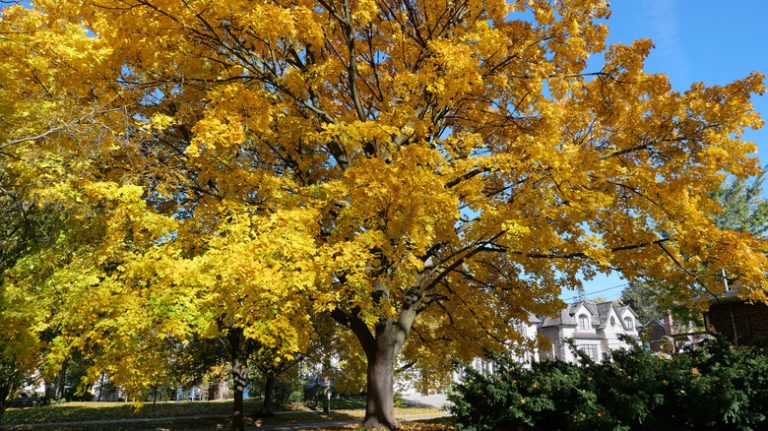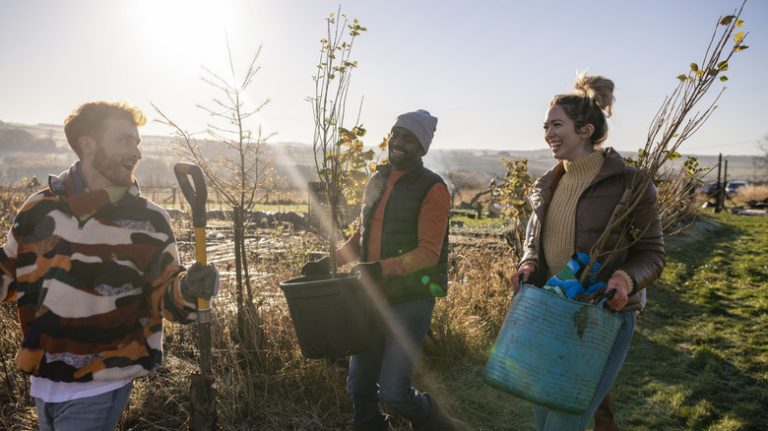Hydrangeas are beautiful flowering shrubs that are often sought after by gardeners. Their large, showy flower heads can add a pop of color to any garden. If you have ever wanted to grow your own hydrangeas, collecting and planting their seeds is a great way to start. Hydrangea seeds are easy to germinate and grow, and with a few tips and tricks, you can have your own beautiful hydrangea plants in no time.
One of the first things you need to know about hydrangea seeds is that they can take a while to germinate. It is recommended to sow the seeds in late winter or early spring, and then place them in a sunny window to get the best results. Once the seeds have sprouted, transplant them into individual pots and continue to care for them indoors until they are large enough to be planted outside.
When collecting hydrangea seeds, it is important to know that not all hydrangeas will produce seeds that are true to their parent plant. Hydrangea macrophylla, also known as mophead hydrangeas, are the most common type of hydrangea that produces blue flowers. If you want to grow blue hydrangeas from seed, it is best to gather seeds from a plant that has already produced blue flowers.
It’s also important to note that some hydrangeas, like the ‘Endless Summer’ variety, are known for their ability to change color based on the pH level of the soil. So even if you gather seeds from a blue hydrangea, the resulting seedlings may produce flowers of a different color.
Once you have gathered your hydrangea seeds, it’s time to sow them. Start by filling a seed tray or small pots with a thin layer of compost. Moisten the compost thoroughly before scattering the seeds on top. Cover the seeds with a thin layer of compost and place the tray or pots in a warm location.
Hydrangeas prefer to be grown from seed in a frost-free environment. If you live in an area with harsh winters, it is best to start the seeds indoors and then transplant the seedlings outside after the danger of frost has passed. The newly planted seedlings will need to be watered regularly and provided with plenty of sunlight to ensure proper growth.
In conclusion, hydrangea seeds are a great way to grow your own beautiful hydrangea plants. By following these tips and tricks, you can successfully germinate and grow hydrangea seeds. Whether you prefer the blue-flowered varieties or want to try your hand at growing different colors, hydrangea seeds offer a fun and rewarding gardening experience.
How to Collect and Plant Hydrangea Seeds
Hydrangeas are beautiful flowering shrubs that are a favorite among gardeners. They come in a variety of colors and can be easily grown from seed. If you’re a hydrangea lover, you may want to know how to collect and plant hydrangea seeds to grow more of these stunning plants in your garden.
1. Identify the parent plant: Choose a mature hydrangea plant with the specific color and characteristics that you prefer. Most hydrangeas are grown from the Hydrangea macrophylla seed, but there are other varieties as well.
2. Gather flower heads: Late in the growing season, when the hydrangea flower heads have dried and turned brown, gather them carefully. Make sure to collect the heads that belong to the parent plant you want to propagate.
3. Collect the seeds: Thoroughly dry the flower heads and then gently crush them to release the tiny, thin seeds. You may need to sift through the crushed flower heads to separate the seeds from any remaining debris.
4. Prepare for sowing: If you’re not planning to sow your hydrangea seeds immediately, store them in a cool and dry place. Keep in mind that hydrangea seeds have a short shelf life, so it’s best to sow them within four months.
5. Sow the seeds: Fill a seed tray or pot with a well-draining seed-starting mix. Sow the hydrangea seeds on the surface and lightly cover them with a thin layer of the mix. Mist the soil with water to keep it moist.
6. Provide the right conditions: Hydrangea seeds need a cold and moist stratification period to break dormancy. You can simulate this by placing the seed tray or pot in a plastic bag and storing it in the refrigerator for 4-6 weeks.
7. Germination and growth: After the stratification period, move the seed tray or pot to a warm location. Hydrangea seeds typically germinate within 2-4 weeks. Once the seedlings have grown a few sets of true leaves, you can transplant them into individual pots or directly into your garden.
8. Enjoy your hydrangeas: Hydrangeas will usually begin flowering in their second year. Sit back and watch as they grace your garden with their showiest blooms.
Collecting and planting hydrangea seeds is an easy and rewarding way to grow more of these beautiful plants. By following these simple tips, you can enjoy an abundance of hydrangeas in your garden and create a stunning display of color. Happy gardening!
How to Propagate Hydrangeas from Seed
If you have a passion for growing beautiful plants, hydrangeas might be the perfect addition to your garden. These stunning flowering shrubs are loved by many gardeners for their large, colorful blooms. While most hydrangeas are grown from cuttings or propagated through division, you can also start them from seed. In this article, we’ll show you how to propagate hydrangeas from seed with some helpful tips and tricks.
1. Gather mature seeds
The first step in propagating hydrangeas from seed is to collect mature seeds from the plants. Hydrangea macrophylla, also known as bigleaf hydrangea, produces seeds that are small, dark, and pointed. Wait until late fall or early winter to collect the seed heads from the hydrangea plants. The heads should be thoroughly dry before you remove the seeds.
2. Sow the seeds
Before sowing the seeds, it’s a good idea to thin the outer layer of the seeds, a process called scarification. This will help improve germination rates. You can do this by rubbing the seed coats gently with sandpaper or nicking them with a knife. Once scarified, you can sow the seeds in a seed-starting mix, covering them lightly with soil.
3. Plant the seedlings
After sowing the seeds, place the seed tray in a warm and bright location, such as a south-facing window. Keep the soil consistently moist but not overly wet. Within four to six weeks, you should start to see tiny seedlings emerging from the soil. Once the seedlings have grown a few sets of true leaves, you can transplant them to larger pots or directly into the garden.
4. Watch out for surprises
When growing hydrangeas from seed, be aware that the resulting plants may not be true to the parent plant. Hydrangeas are known for their ability to change color based on soil pH, and this variation can be even more pronounced in seed-grown plants. So, don’t be surprised if your blue hydrangea seeds produce pink flowers instead!
5. Join a community of hydrangea growers
If you want to learn more about growing hydrangeas from seed and share your experiences with other gardeners, consider joining a community or forum dedicated to hydrangea growing. You can find valuable tips, advice, and even swap seeds or plants with fellow enthusiasts.
Now that you know how to propagate hydrangeas from seed, you can give it a try in your own garden. It’s a rewarding process that allows you to grow unique hydrangea varieties and enjoy their beautiful blooms. Remember to be patient, as germination rates can vary, and don’t hesitate to reach out for help if needed. Happy gardening!
Gather the Flower Heads
In late summer or early fall, when the hydrangea flowers have bloomed and are starting to fade, it’s time to gather the flower heads. This is an important step if you want to collect the seeds for planting or propagate new hydrangeas.
Here’s what you need to know:
- The flower heads should be thoroughly dry before you collect them. Check the heads to make sure the petals are papery and brittle.
- Most hydrangeas have large, round flower heads, while others have more conical shapes. Choose the flower heads that appeal to you or match the variety you want to grow.
- Using sharp scissors or pruners, cut the flower heads from the plant. Leave a few inches of stem attached to each head.
- If you plan to collect seeds, allow the flower heads to dry indoors for a few weeks. Once they are completely dry, gently rub the heads between your fingers to release the seeds. Collect the seeds in a small container.
- If you prefer to plant the entire flower head, you can sow it directly in your garden or in seed trays indoors. The flower heads contain multiple seeds, and each seed has the potential to grow into a new hydrangea plant.
Now that you know how to collect and handle hydrangea flower heads, you can start growing your own beautiful hydrangeas. Follow the steps for sowing and growing the seedlings, and before you know it, you’ll have a garden filled with stunning hydrangeas in various colors.
For more tips and information, join our mailing list and stay updated on all things hydrangea. And don’t forget to check our website for our hydrangea seed collection. Happy gardening!
Sow the Seeds
Once you have received your 5 blue Hydrangea macrophylla seeds, it’s time to sow them and start growing your own beautiful hydrangeas. Here are some easy steps to follow:
Step 1: Identify the Seeds
Before sowing the seeds, it’s important to identify them. Hydrangea macrophylla seeds are usually small and dark in color. They can look like tiny shriveled brown beads. Check the package for any additional info or ask the seller if you are unsure.
Step 2: Gather Your Supplies
For sowing the seeds, you will need a small pot or seed tray, high-quality potting soil, and a spray bottle for misting the soil. Make sure to get all the necessary supplies before you start.
Step 3: Sow the Seeds
Fill the pot or seed tray with the potting soil, leaving about an inch of space from the top. Sprinkle the Hydrangea macrophylla seeds on top of the soil, making sure to space them out. Cover the seeds lightly with a thin layer of soil, around 1/8 inch deep.
Step 4: Water and Provide Light
Thoroughly water the soil until it is moist but not soaked. Place the pot or seed tray in a well-lit area, but avoid direct sunlight. Hydrangea seeds prefer diffused light for germination.
Step 5: Care for the Seedlings
After a few weeks, you should start to see tiny green seedlings emerging from the soil. Keep the soil moist by misting it regularly with a spray bottle. Provide the seedlings with enough light, but avoid exposing them to extreme temperatures or frost.
Step 6: Transplant the Seedlings
When the seedlings have grown several sets of true leaves, they can be transplanted into larger pots or directly in your garden. Make sure to space the plants about 3-4 feet apart to give them enough room to grow.
Tips and Tricks
- Hydrangea macrophylla seeds may take a while to germinate, so patience is key.
- Keep an eye out for any surprises in the flower color as the hydrangeas grow. Some varieties can produce different colored flowers from the parent plant.
- If you want to propagate more hydrangeas, you can collect the dried flower heads in late summer and extract the seeds.
By following these steps, you can successfully sow and grow your own blue hydrangea plants. Join the many gardeners who enjoy the showiest flowers in their gardens!


